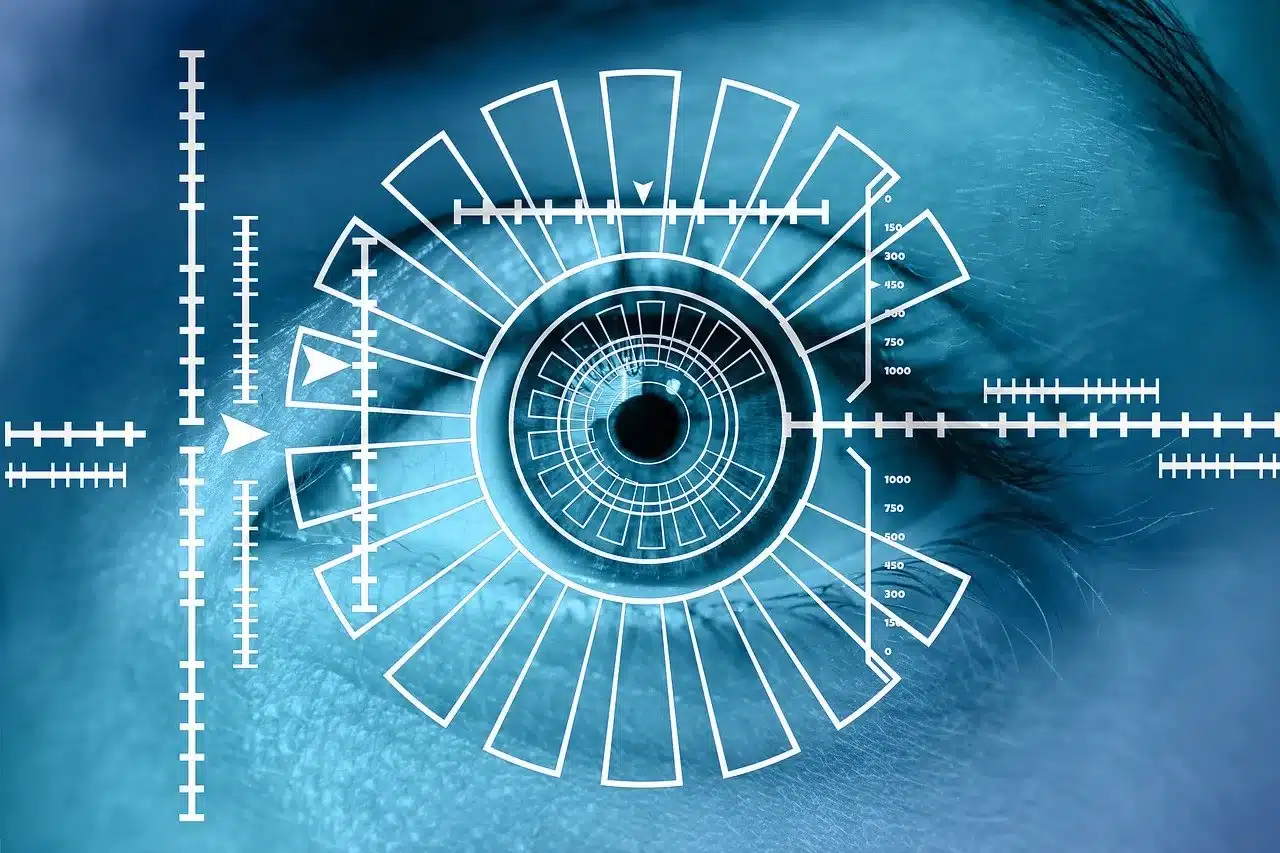In the fast-paced and interconnected world of the digital age, ensuring robust security measures is paramount. Traditional authentication methods, such as passwords and PINs, have limitations, often falling prey to breaches and vulnerabilities. Enter biometric authentication—a cutting-edge approach that leverages unique physical or behavioral attributes to verify and grant access. This comprehensive article explores the landscape of biometric authentication, delving into its definition, types, applications, security considerations, and the future of this innovative technology in safeguarding digital environments.
Understanding Biometric Authentication:
1. Definition:
Biometric authentication involves the use of unique physical or behavioral characteristics to verify the identity of an individual. Unlike traditional authentication methods that rely on something a person knows (like a password), biometric authentication is based on something a person is—specifically, their biological or behavioral traits.
2. Types of Biometrics:
- Fingerprint Recognition: Analyzing the unique patterns of ridges and valleys on an individual’s fingertip.
- Facial Recognition: Identifying and verifying a person based on facial features and proportions.
- Iris and Retina Scans: Examining the distinct patterns in the iris or retina of the eye.
- Voice Recognition: Analyzing the unique characteristics of an individual’s voice.
- Hand Geometry: Measuring and analyzing the physical structure of the hand.
- Behavioral Biometrics: Analyzing patterns of behavior, such as typing rhythm or walking gait.

Applications of Biometric Authentication:
1. Mobile Devices:
- Unlocking smartphones using fingerprint or facial recognition.
- Biometric authentication for mobile banking applications.
2. Physical Access Control:
- Secure entry to buildings or restricted areas using biometric scans.
- Biometric authentication for unlocking doors and gates.
3. Financial Services:
- Biometric authentication for online banking transactions.
- Secure access to ATMs using fingerprint recognition.
4. Healthcare:
- Patient identification and access control in healthcare facilities.
- Biometric authentication for electronic health records.
5. Government Systems:
- Biometric identification in national ID cards and passports.
- Voter registration and authentication using biometrics.
6. Workplace Security:
- Biometric time and attendance systems.
- Access control for secure areas within workplaces.
7. Consumer Electronics:
- Biometric authentication for laptops and tablets.
- Secure access to smart home devices using biometrics.
Security Considerations in Biometric Authentication:
1. Spoofing and Presentation Attacks:
- Spoofing: Attempts to deceive the biometric system using fake fingerprints, facial images, or other replicated traits.
- Presentation Attacks: Manipulating biometric data during the authentication process.
2. Biometric Data Storage:
- The security of stored biometric templates is critical.
- Implementing strong encryption and secure storage practices is essential to prevent unauthorized access.
3. Biometric Template Protection:
- Techniques like salting and hashing to protect stored biometric templates.
- Continuous research on improving template protection methods.
4. Privacy Concerns:
- Addressing concerns related to the storage and use of biometric data.
- Implementing privacy-by-design principles in biometric systems.
5. Algorithmic Bias:
- Ensuring fairness and eliminating bias in biometric algorithms.
- Regular audits and assessments to identify and rectify bias in the system.
6. Multi-Modal Biometrics:
- Combining multiple biometric modalities for enhanced security.
- Reducing the risk of successful spoofing by requiring authentication from multiple biometric traits.
7. Regulatory Compliance:
- Adhering to data protection regulations and privacy laws.
- Compliance with standards such as GDPR (General Data Protection Regulation) and HIPAA (Health Insurance Portability and Accountability Act).
Advantages of Biometric Authentication:
1. Enhanced Security:
- Biometrics provide a high level of security as they are based on unique and inherent traits.
2. Convenience:
- Users do not need to remember complex passwords; authentication is seamless and quick.
3. Reduced Dependency on Passwords:
- Mitigates the risks associated with password-based authentication, such as weak passwords and password reuse.
4. Non-Transferability:
- Biometric traits are difficult to forge or share, enhancing the non-transferable nature of authentication.
5. User Experience:
- Offers a positive user experience by eliminating the need for manual input of passwords.
6. Efficiency:
- Streamlines authentication processes, reducing the time and effort required for users to access systems or devices.
Challenges and Considerations:
1. Lack of Standardization:
- The absence of standardized biometric data formats and communication protocols.
- Efforts to establish industry standards for interoperability.
2. Integration Challenges:
- Integrating biometric systems with existing infrastructure and legacy systems.
- Compatibility issues between different biometric devices and platforms.
3. Cost of Implementation:
- Initial costs associated with implementing biometric authentication systems.
- Long-term considerations for maintenance and updates.
4. Public Perception:
- Addressing concerns and apprehensions among the public regarding the use of biometric data.
- Building trust through transparent practices and communication.
5. Biometric Data Storage:
- Safeguarding stored biometric templates from breaches.
- Implementing robust encryption and access controls.
6. Reliability and Accuracy:
- Ensuring the reliability and accuracy of biometric systems across diverse demographic groups.
- Continuous refinement and testing to improve accuracy.
The Future of Biometric Authentication:
1. Continuous Authentication:
- The evolution towards continuous, real-time authentication based on ongoing monitoring of biometric traits.
2. Behavioral Biometrics:
- Increasing reliance on behavioral biometrics, such as typing patterns and mouse movements, for continuous authentication.
3. Decentralized Identity:
- Exploration of decentralized identity systems leveraging blockchain for enhanced security and privacy.
4. Biometric Cryptography:
- Advancements in biometric cryptography for secure key generation and authentication.
5. AI and Machine Learning Integration:
- Enhanced capabilities through the integration of artificial intelligence (AI) and machine learning (ML) for improved accuracy and adaptability.
6. Global Collaboration on Standards:
- Increased collaboration among governments, industries, and technology providers to establish global standards for biometric authentication.
7. Biometric Wearables:
- Integration of biometric authentication into wearables, such as smartwatches and fitness trackers.
8. Zero-Trust Architecture:
- Adoption of a zero-trust security model, where continuous verification is required, aligning with the principles of biometric authentication.
Conclusion: Embracing the Biometric Future
Biometric authentication stands at the forefront of the digital revolution, offering a secure and efficient means of identity verification. As technology continues to evolve, so too will the capabilities and applications of biometric systems. Organizations and individuals alike are poised to benefit from the enhanced security and user experience that biometric authentication brings to the digital landscape.
However, the successful adoption of biometrics requires a careful balance between innovation and addressing associated challenges. From privacy concerns to technological considerations, the path forward involves collaboration, standardization, and a commitment to ethical and secure practices.
As we embrace the biometric future, the ongoing development of this technology will play a pivotal role in shaping a digital landscape where security, convenience, and privacy coexist harmoniously. With a focus on continuous improvement and a commitment to user-centric design, biometric authentication is set to remain a cornerstone in the architecture of secure and seamless digital interactions.

Introducing Marcus Garretson, your guide through the digital fortress of cybersecurity. With a keen eye for online threats and a passion for safeguarding the virtual realm, Marcus shares his expertise through insightful blogs that decode the intricacies of cybersecurity. Drawing from years of experience in the field, Marcus keeps you one step ahead of evolving cyber threats, offering practical tips, and demystifying the world of digital defense.
Join Marcus on a journey to fortify your online presence and navigate the ever-changing landscape of cybersecurity with confidence. Connect: [email protected]
